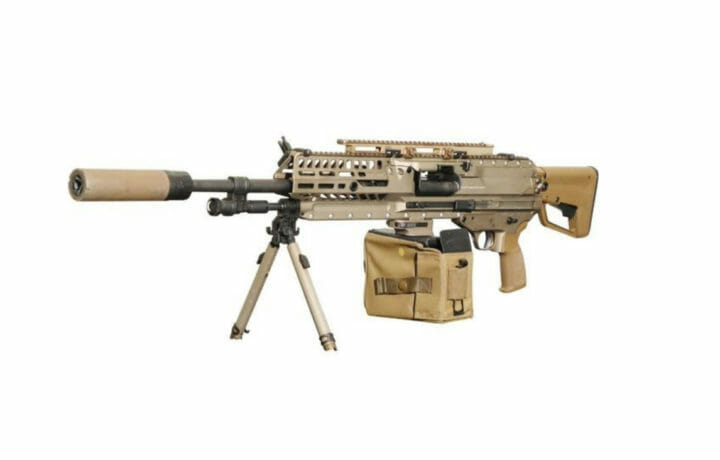This week, the United States Army announced that it has selected Sig Sauer to produce the Next Generation Squad Weapons (NGSW) that will eventually replace the legacy M4 carbine and M249 light machine gun. Following a rigorous 27-month prototyping and evaluation period, the Army has awarded the Virginia-based Sig Sauer, Inc. a 10-year firm-fixed price follow-on production contract to manufacture and deliver two NGSW variants.
The XM5 rifle will serve as a replacement to the M4, which was introduced in 1994 and is essentially a shorter and lighter variant of the M16A2 assault rifle; while the XM250 automatic replacement will take on the role that has been served since 1984 by the M249 light machine gun, formerly designated as the M249 Squad Automatic Weapon (SAW). The Army’s NGSW prototyping and evaluation included technical tests and soldier touch points, and also considered competing prototypes from General Dynamics Ordnance and Textron Systems.
The value of the initial delivery order for the contract is for $20.4 million for weapons and ammunition that will undergo testing, the Army also announced. The contract also covers accessories, spare parts and contractor support. It will also provide other Department of Defense (DoD) services, and potentially, Foreign Military Sales (FMS) countries the opportunity to purchase the newly selected NGSW weapons.
New Platform
The U.S. Army had sought to replace the legacy small arms with a new weapon that could serve as both the main battle rifle and squad automatic weapon – both chambered in the newly developed 6.8x43mm Remington Special Purpose Cartridge (6.8 SPC).
The new platform has also been noted for offering significant capability improvements in accuracy, range, and overall lethality. Both are lightweight, fire more lethal ammunition, mitigate recoil, provide improved barrel performance, and include integrated muzzle sound and flash reduction.
As previously reported, the U.S. Army’s goal is that over the next five years it would add more than 120,000 new light machine guns and rifles to its arsenal to replace the M4 and M249. This would include 4,000 next fiscal year; double that number for 2023 and 2024 until by 2025 a total of 121,773 new weapons have been acquired. It is unclear at this point if the Army is still on track to meet that timetable.
Both the XM5 and XM250 will be paired with the XM157 Fire Control, a ruggedized advanced fire control system that was developed to increase accuracy and lethality for the close combat force.
The XM157 also integrates a number of advanced technologies including a variable magnification optic (1X8), backup etched reticle, laser rangefinder, ballistic calculator, atmospheric sensor suite, compass, Intra-Soldier Wireless, visible and infrared aiming lasers, and a digital display overlay. It will be produced by Sheltered Wings Inc. d/b/a Vortex Optics, Barneveld, Wisconsin
New Caliber Ammunition
The new ammunition was developed by Remington Arms in collaboration with members of the United States Army Marksman Unit and the United States Special Operations Command to replace the 5.56 NATO cartridge. It is based on the .30 Remington cartridge, and is essentially “midway” between the 5.56x45mm NATO and the 7.62x51mm NATO in bore diameter. However, it still uses the same diameter bullet as the .270 Winchester hunting cartridge.
In January, the Army awarded Winchester, the largest manufacturer of small-caliber ammunition for the U.S. military, a $20 million in cost-plus and firm-fixed-price contract to produce the 6.8mm ammunition for the NGSW.
Work on the U.S. Army contract will be performed at the Lake City Army Ammunition Plant (LCAAP) in Independence, MO, the United States’ only government-owned, contractor-operated small caliber ammunition production facility. The 3,935-acre facility was originally established by Remington Arms in just prior the United States entry into the Second World War in 1941. It is now part of the U.S. Army Joint Munitions Command, and the government-owned plant provides small caliber military ammunition for both training and combat purposes, and also serves as a national test center for ammunition performance and weapons firing.
LCAAP has been operated by Winchester Ammunition since October 2020 under an $8 billion contract, which had an initial term of seven years and could be extended by the U.S. Army for up to three additional years. Winchester had previously held the contract to manage and operate LCAAP from 1985 to 2001. From 2001 until 2020, Alliant Technosystems ran the facilities.




